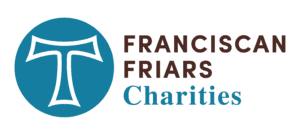
Catholic schools may be closing in many places around the country, but a small mission community in Arizona is bucking the trend.
A new chapter is beginning again in the Franciscan ministry to the Tohono O’odham people with the reopening of the San Xavier del Bac Mission School. The project is beginning small, with 16 students from kindergarten through second grade. The school suspended operation two years ago after facing issues such as declining enrollment but is now making a comeback. The reopening was celebrated with a Mass in August celebrated by Bishop Edward J. Weisenburger of Tucson.
Fr. Ponchie Vasquez, guardian and pastor of the San Xavier del Bac Mission, has served in ministry for decades to the Tohono O’odham people. They live in a hard scrabble, difficult region, one of the poorest areas in the United States.
San Xavier del Bac Mission School Principal Minh Solorzano described reopening the school as a positive development during an interview with National Public Radio in Southwest Arizona.
“To have the opportunity to help reopen this school is such a blessing and a privilege for me and to have Father Ponchie here at my side, to be a great supporter of that and the diocese as well, speaks a lot,” Solorzano said.
Solorzano has been working on reopening the school since June 2023.
“Knowing that the children are going to be here to learn in this building and to see that growth in faith and culture, it’s just priceless,” she said.
Fr. Ponchie noted that, even while the school has closed twice before, he sees the process as a part of growth and life. The school is the newest, yet also the oldest Catholic school in Arizona, with the original San Xavier established back in 1864. The recent closure allowed the school to regroup, renovate and complete necessary updates. The plan is for the school to add grades each year, eventually forming a complete elementary education.The 16 students are receiving scholarships and tuition support.

Looking ahead, the school hopes to incorporate the Tohono O’odham language and culture into its curriculum as well as promoting Catholic values. The school is located on reservation territory.
Incorporating Native cultures is an integral part of the parish. Fr. Ponchie frequently consults with tribal elders and leaders, reflecting a respect for the culture. He’s been ministering to Native Americans in the Southwest for the past 13 years.
Even after 13 years, “they consider you a visitor. They are in for the long haul,” he said. His philosophy of mission among Native Americans focuses on presence.

“You have to go out and live among them. You have to sit on a rock and be with them,” he said. Much of his ministry involves providing the sacraments and praying with the long-established community.
The mission region totals nearly 5,000 square miles and straddles the U.S.-Mexico border west of Tucson. It contains one small town, Sells, and about 70 villages. Tohono O’odham means desert people and include about 13,000. They face serious long-term issues, including high suicide rates, gang activity, unemployment, immigration concerns and drug trafficking.

